The synth wizard
in you
Famous for Pink Floyd’s “On the Run,” the EMS Synthi and its forerunner the VCS3 are the synths you don’t realize you’ve heard everywhere.
Roxy Music, LCD Soundsystem, The Who, Tangerine Dream, Kraftwerk, King Crimson, and Brian Eno, were just a few of the artists who took it on sonic journeys. Where will Synthi V take you?
A Singular Sound
Neither quite like a Mini nor quite like an ARP, the Synthi has a raw, aggressive quality that jumps out of the speakers. So will your music.
Bigger on the Inside
Like a certain blue telephone box, Synthi V packs incredible technology into a deceptively small package and will transport you through time and space.
Modeled to the Last Transistor
Our renowned True Analog Emulation® modeling doesn’t merely mimic the sound. It reproduces exactly how and why the original’s components made that sound.
Jack of All Trades
Though the Synthi is known for special FX, Synthi V will add take-no-prisoners leads, basses, and atmospheres to any style of music you throw it at.
Every Band
Needed a Synthi
Electronic Music Studios’ VCS3 and Synxthi won the hearts and blew the minds of British musicians throughout the 1970s. Its inventors were beyond revolutionary.
Electronic Music Studios’ VCS3 and Synthi won the hearts and blew the minds of British musicians throughout the 1970s. Its inventors were beyond revolutionary.
Discover the history of Synthi
Set the Controls
for the Heart of the Sound
Synthi V’s main interface captures all the charm of the original, with a handful of small tweaks that add up to a big difference.
If you’ve ever used a hardware EMS synth, you’ll feel right at home. If you’ve ever thought, “I wish my Synthi would do that,” ours does. If you’re new to the Synthi universe, you’ll forget you’re playing a virtual instrument.
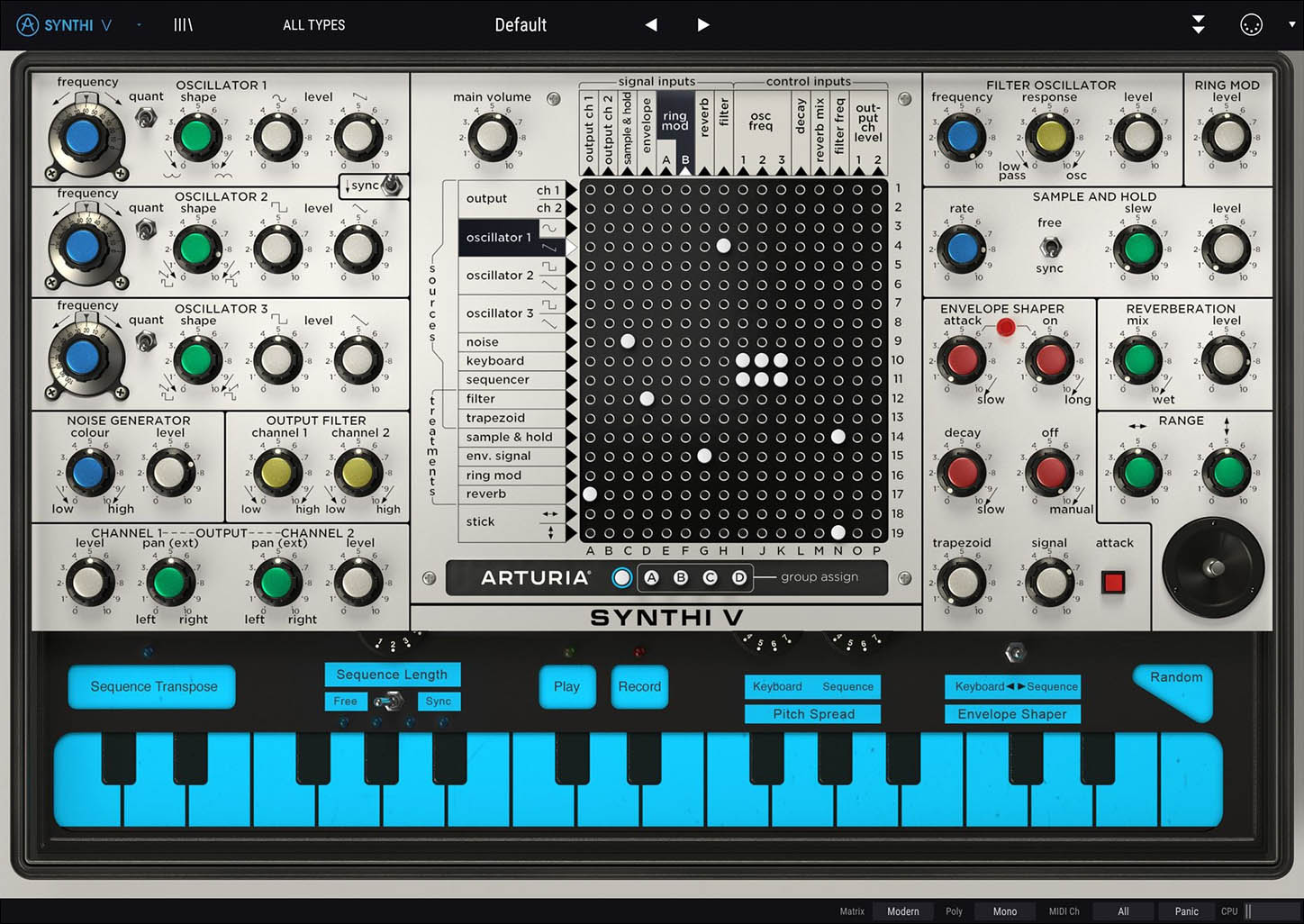
_1
_2
_3
_4
_5
_6
_7
01. Enhanced VCOs
Synthi V’s oscillators can quantize pitch to semitones and hard-sync VCO2 to VCO1. Or, control-drag on the knobs to make fine adjustments.
02. Put a Pin In It
Patch audio and control signals to destinations by clicking on the virtual pinboard. Sources and destinations are highlighted as you go.
03. Pintastic
Use a special group pin to route several signals to several places at once in the Advanced Panel.
04. Sample and Hold
We’ve added a sample-and-hold generator with its own row in the pin matrix, for cool non-linear modulation effects..
05. Synced On the Run
We’ve preserved the legacy sequencer in all its glory, only now it optionally syncs to MIDI or your host DAW’s project tempo.
06. Ready Player One
Assign each axis of the joystick to any destination you choose.
07. Attenuator Pins
The hardware used special pins if you wanted less of an audio or control signal to go somewhere. Click-hold on a pin to choose one.
Synthi
and Synthier
Synthi V’s Advanced Panel lets you write the history of the future.
Since the Synthi’s designers were early computer geeks, we thought about what software-powered features they might have added if they’d had the chance. Then we did it.
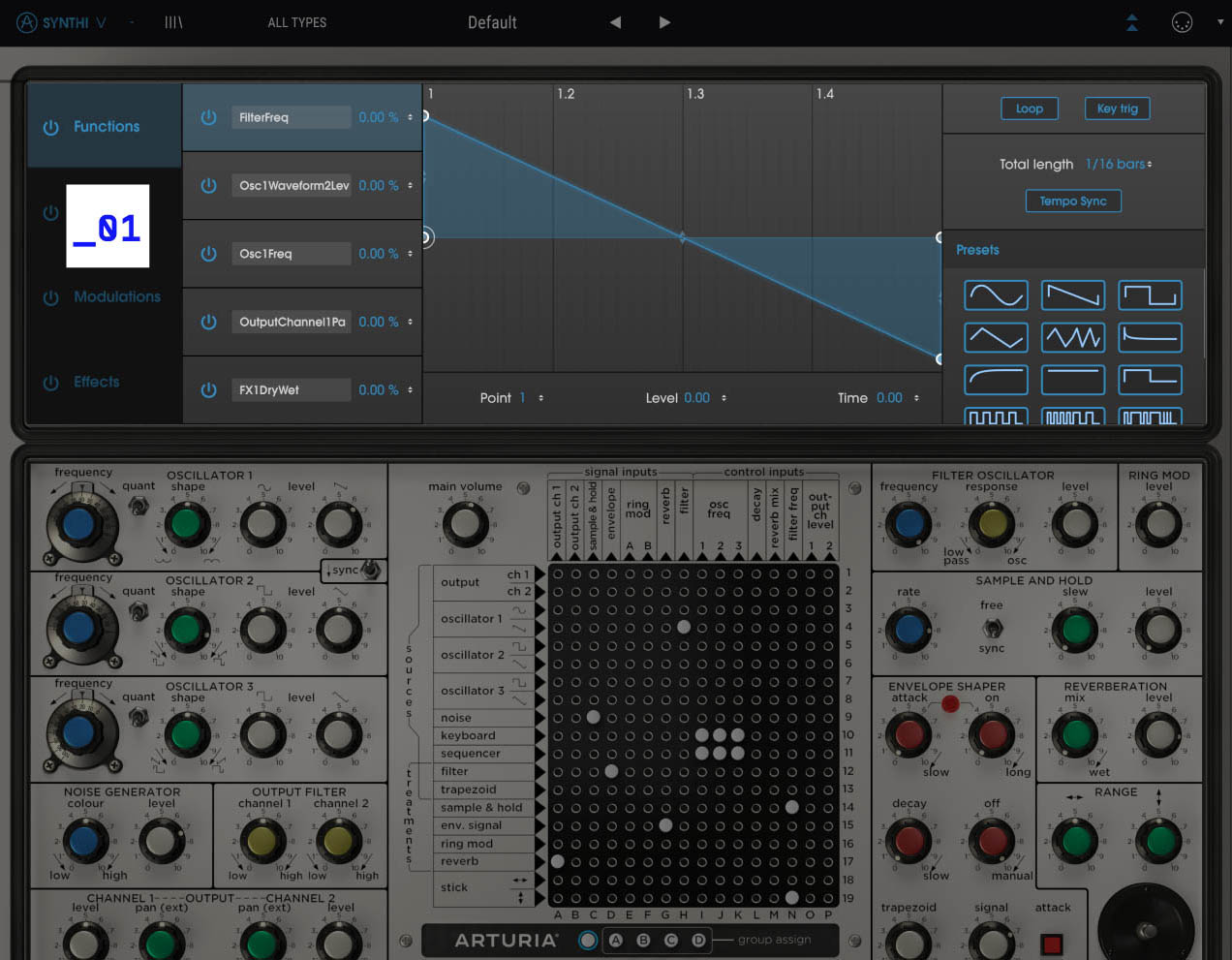
Functions can behave like an LFO, a complex multi-segment envelope, or anything in between. Route up to five of them to any parameter in Synthi V.
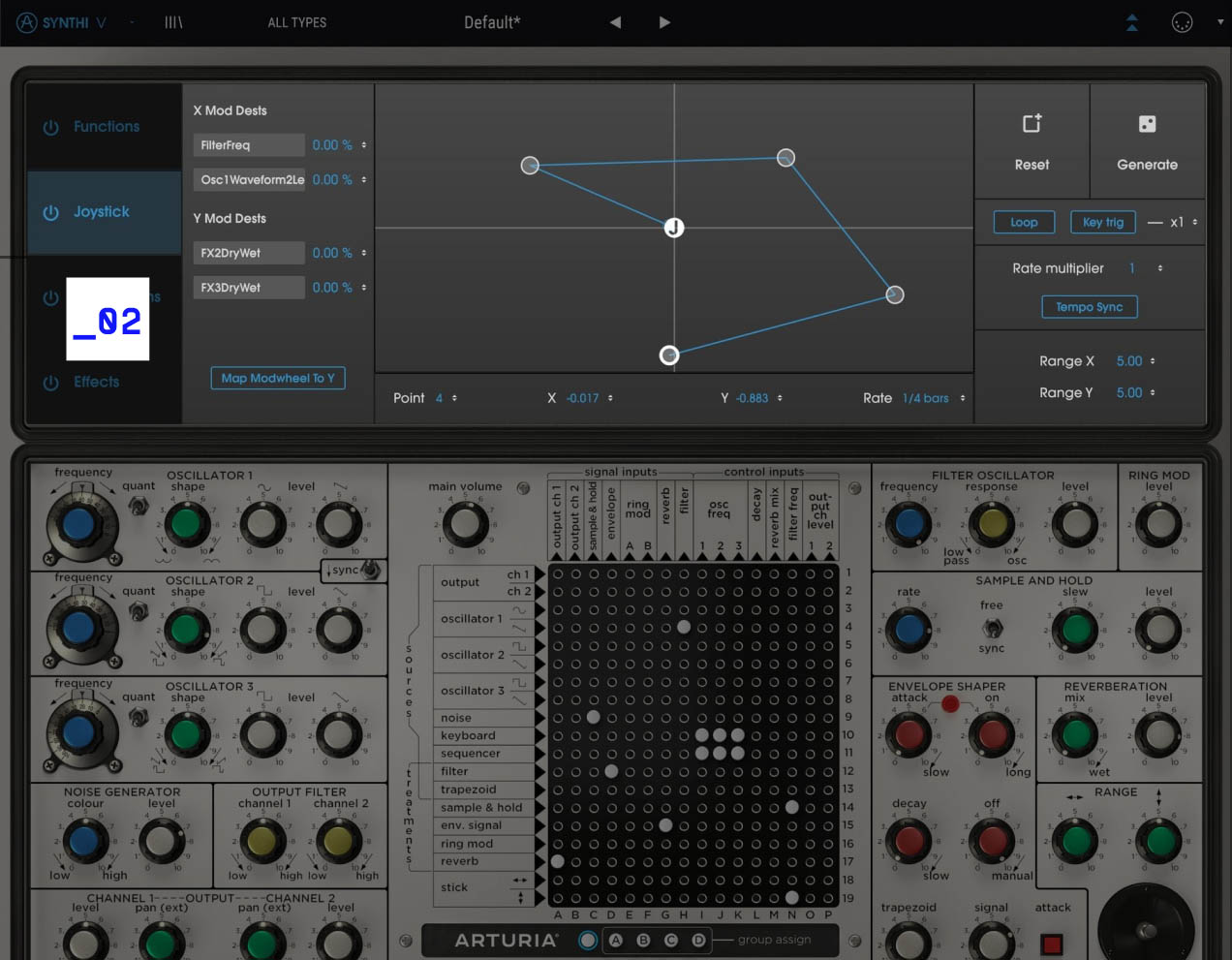
Create automatic, tempo-syncable joystick moves (or trigger them manually) and assign even more joystick routings here. It gets crazy deep, crazy fast.
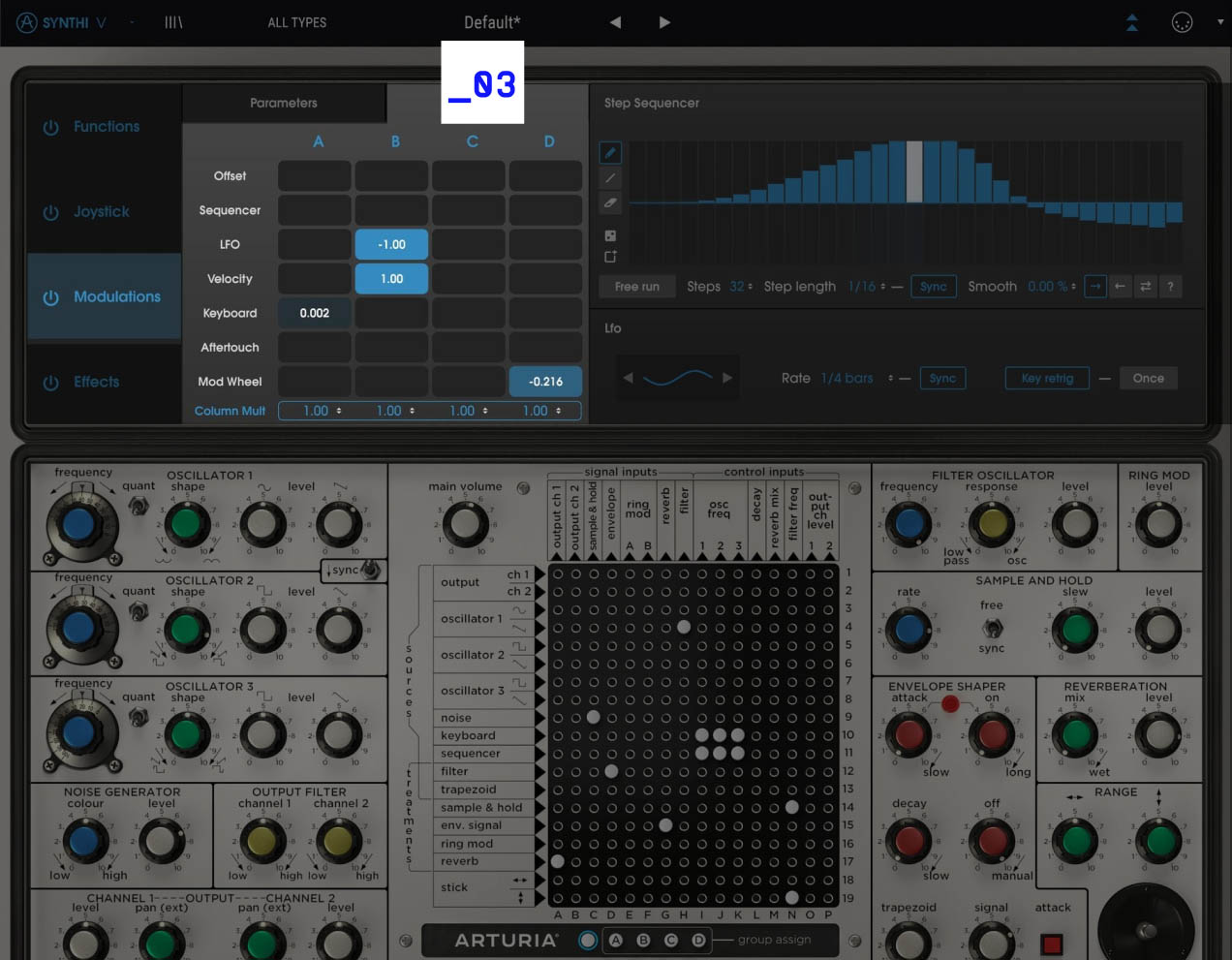
With modern control sources like velocity, aftertouch, and an extra LFO, the advanced modulation matrix picks up where the original left off.

Here is where you can assign modulation sources to figure into any group pins you have in play on the main panel.
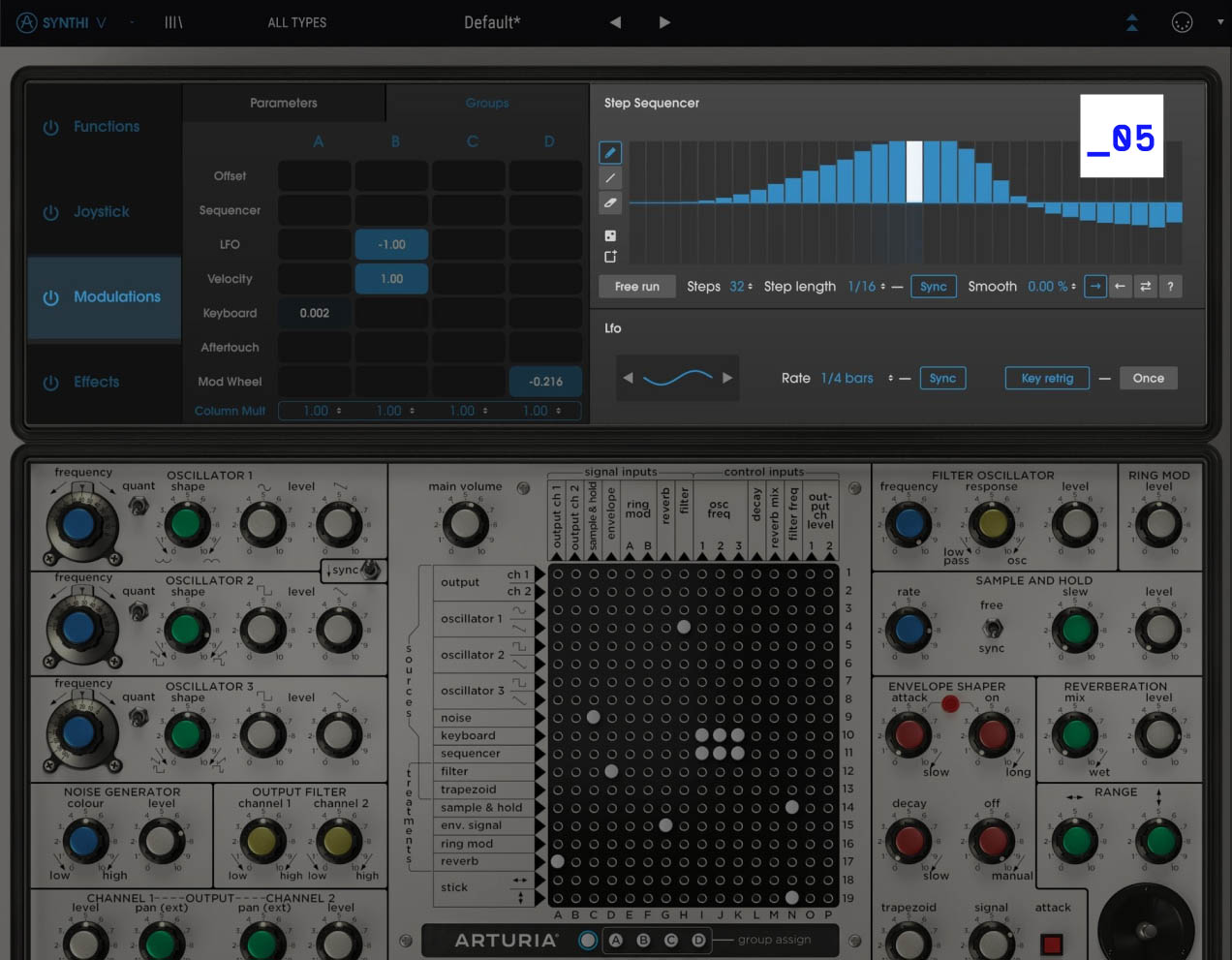
Create sequences of up to 32 steps and assign them to pitch or any other parameter in Synthi V.
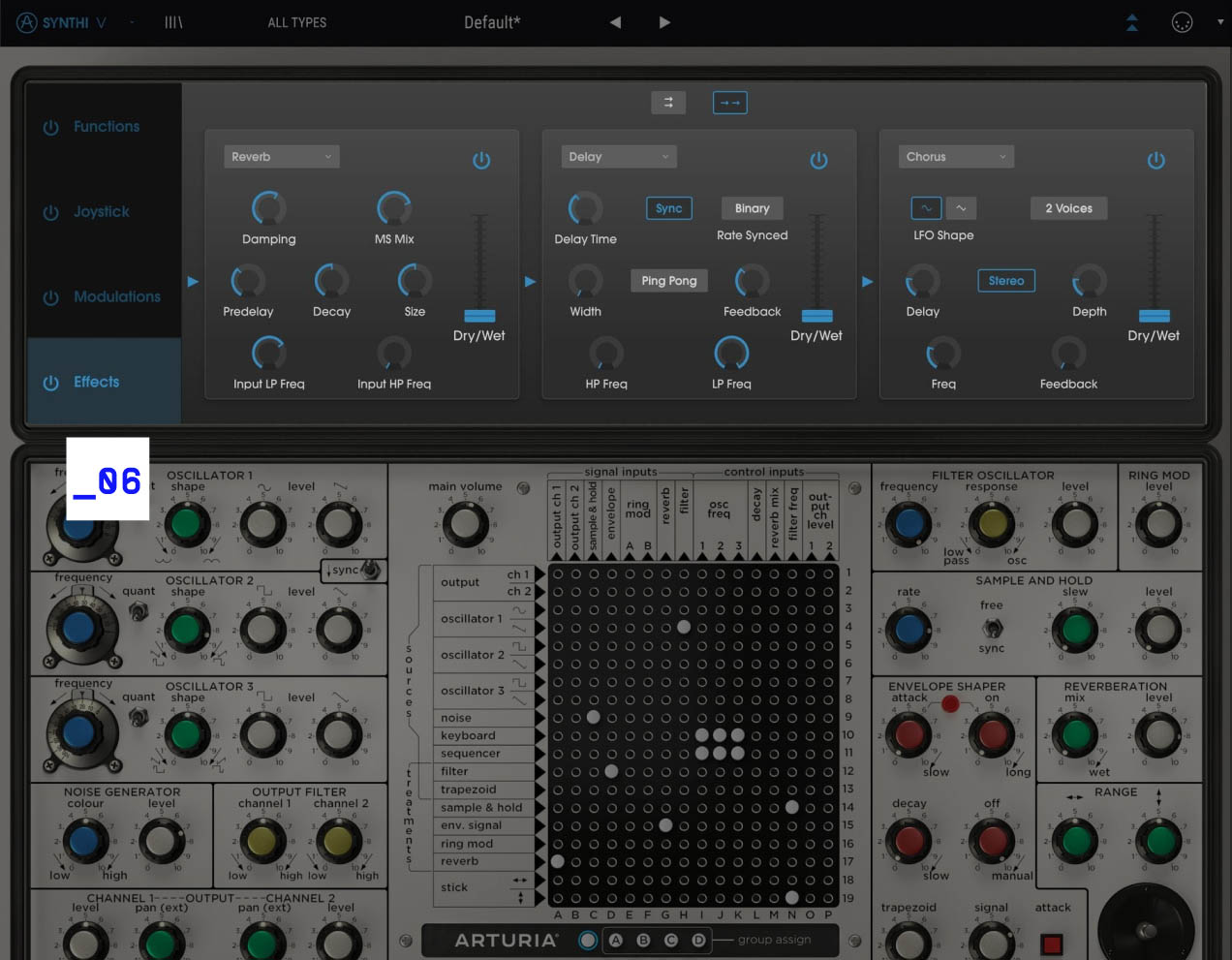
Route Synthi V’s final output through up to three effects at once, in series or parallel. Appropriate effects tempo-sync, including a stereo ping-pong delay.
Hear it
in action
Synthi V announces itself with bold sound and undeniably psychedelic energy. Here are the tracks it inspired some of our favorite electronic music artists to create.
Chill One
Hawking Radiation
Int
Jarre Meet_Floyd
Just Another_Day
Past
Reach For
Spiral
Artistscorner
PressClippings
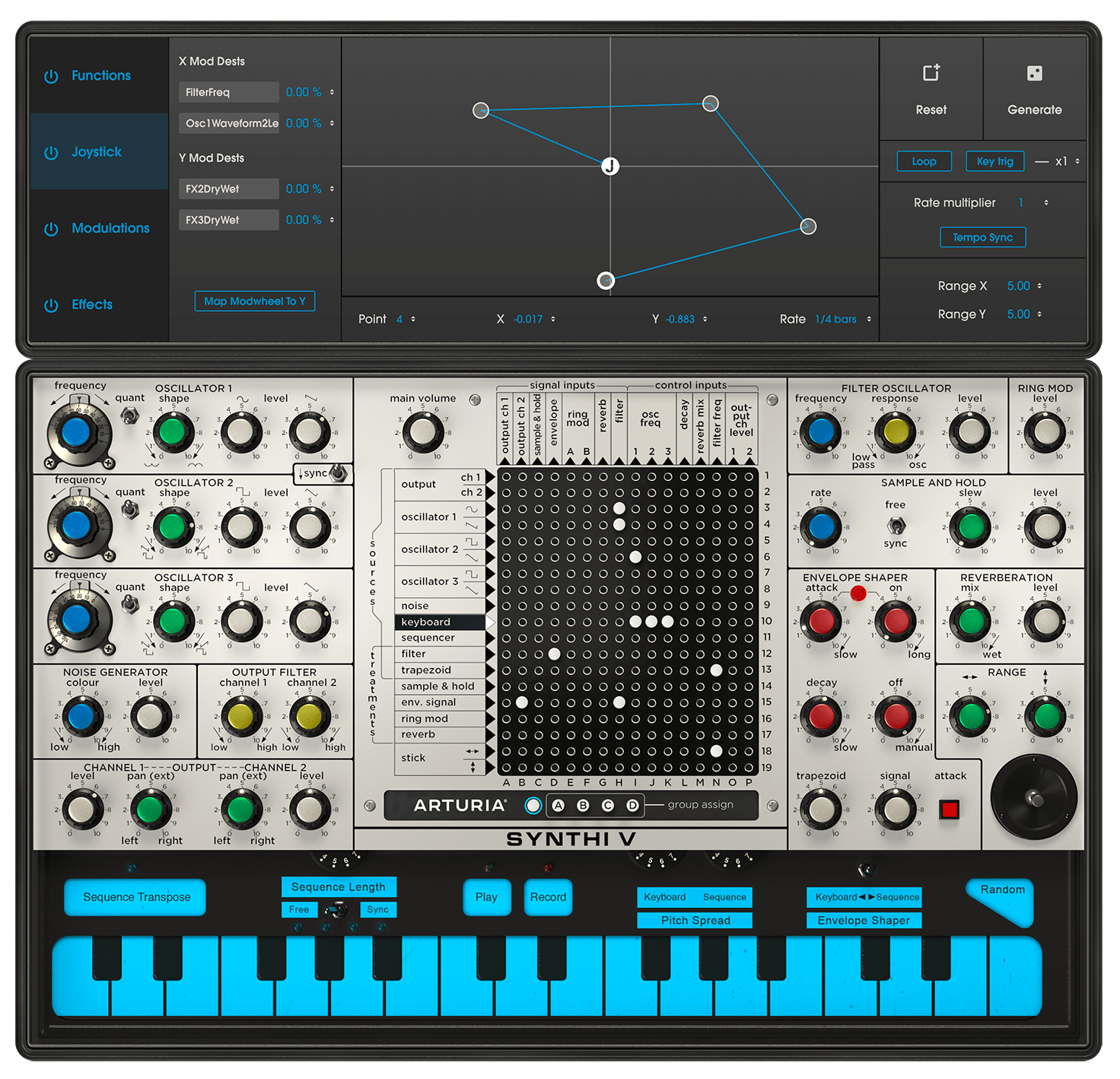
Included in
V collection
Legendary Keyboards Reinvented
This instrument is also part of the V Collection -your complete dream line-up of the legendary synths, organs, pianos and more that made keyboard history. They’re modeled with the most advanced technologies for authentic realism, and enhanced with new creative options. Whether you use it as DAW plugins in the studio or standalone at gigs, V Collection puts the greatest keys of all time at your fingertips for instant inspiration.
Learn More
The features
you need

Integrated in-app tutorials guide you through every aspect of the instrument, from individual parameters to tips from our sound designers, so you can focus on the creative stuff. It shouldn't be this easy, but it is!

Arturia Software Center lets you download, organize, and update all of your Arturia software titles in one place, as well as manage all of your licenses across multiple devices. Keep it simple.

Our virtual instruments and plugins are designed to fit right into your setup without hassle. Whatever your style, you can explore sound while enjoying full compatibility with major DAWS, on both Windows and MacOS.

Instantly find the sound that’s in your head with intelligent & streamlined preset browsing. Search with keywords, explore by instrument type, musical style, and more - you can even save your favorites to quickly recall later.

Whether you want the full visual immersion of our classic instrument emulations, or to save precious screen real estate, the interfaces for all of your Arturia virtual instruments can be resized to a scale that suits you.

Instruments come seamlessly mapped for the Arturia KeyLab range - but they’ll place nice with other MIDI controllers too. Instant sound tweaking macros, easy DAW integration, and standalone operation.
TAE® Powered
The exclusive analog modeling technology that makes our emulations indistinguishable from the originals.
By accurately mimicking the characteristics of analog oscillators, filters, and soft clipping, we can provide astonishing component-accurate detail and authentic analog charm in equal measure.
Learn more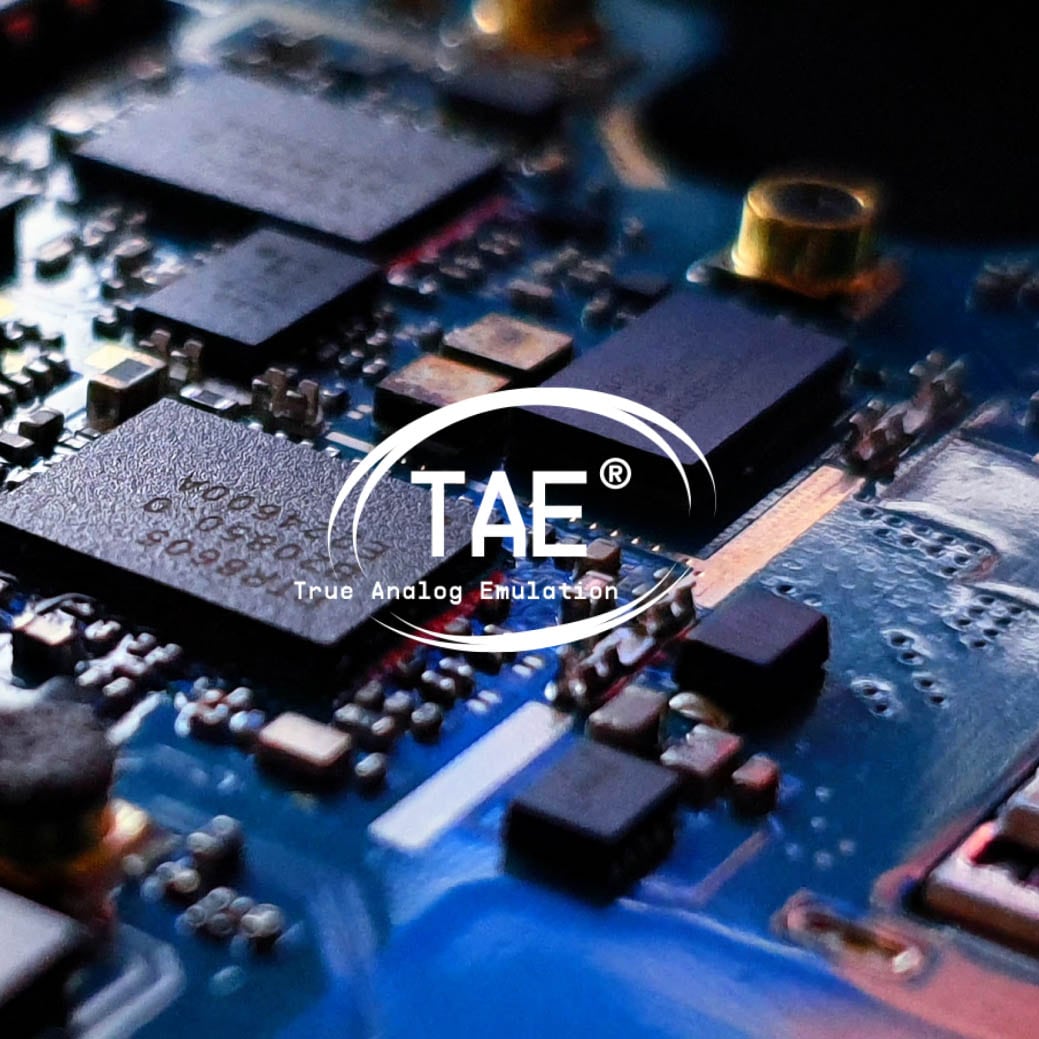
Gallery
Main Features
A component-level model of the EMS Synthi AKS
3 oscillators with waveform mix, noise generator, 18 dB/oct resonant filter, output section with spring reverb modelling
Modular architecture, allowing to route signals in unexpected ways
Ring Modulator, loopable Envelope Shaper, 2 axis Joystick and Sample and Hold modules for advanced modulations
Original keyboard sequencer module with sync to DAW tempo
2 matrix behavior modes: modern and vintage for cross-talk simulation
5 assignable voltage functions to create multi-point envelopes and LFOs synced to DAW tempo
Advanced joystick automation module for modulating parameters in a 2D space
Matrix pin amounts modulations possibilities (with 4 independent groups)
10 effects, Reverb Phaser, Flanger, Chorus, Overdrive, Delay, ...
Up to 4 voices of polyphony
Over 250 factory presets
Platform specifications
Windows
- Win 10+ (64bit)
- 4 GB RAM
- 4 cores CPU, 3.4 GHz (4.0 GHz Turbo-boost)
- 3GB free hard disk space
- OpenGL 2.0 compatible GPU
- ARM processors not supported on Windows
Required configuration
- Works in Standalone, VST, AAX, Audio Unit, NKS (64-bit DAWs only).





Apple
- Mac OS 11+
- 4 GB RAM
- 4 cores CPU, 3.4 GHz (4.0 GHz Turbo-boost) or M1 CPU
- 3GB free hard disk space
- OpenGL 2.0 compatible GPU
Work with ASC
- An elegant and simple solution to help you install, activate, and update your Arturia software instruments.
All manufacturer and product names mentioned on this page are trademarks of their respective owners, which are in no way associated or affiliated with Arturia. The trademarks of other manufacturers are used solely to identify the products of those manufacturers whose features and sound were studied during the development. All names of equipment, inventors, and manufacturers have been included for illustrative and educational purposes only, and do not suggest any affiliation or endorsement by any equipment inventor or manufacturer.






